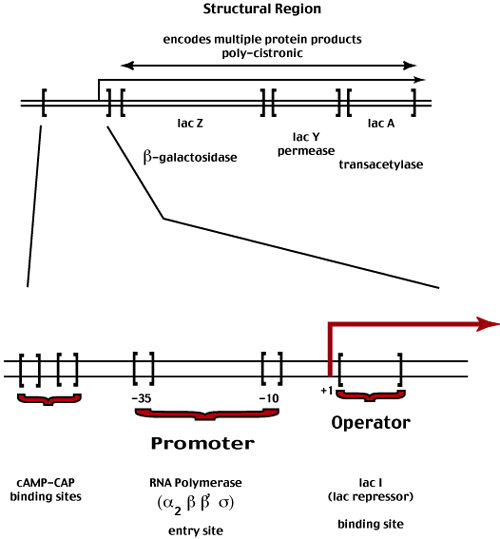Regulation of Transcription
The lac Operon Model

E coli expresses the lac I gene constitutively - there is always lac repressor running around the cell. So how do we turn on transcription of the lac operon when we need it?
Activation of the lac operon requires the presence of the substrate of the biochemical pathway it encodes - lactose. A metabolic derivative of galactose - allolactose - is the inducer of the operon. Allolactose binds to the lac repressor, causing a conformational shift in the protein which results in the loss of its squence specific DNA binding ability (allosteric regulation). Thus, in the presence of the inducer, the repressor no longer binds to the operator - thus freeing the promoter which is now accessable to the RNA polymerase + sigma factor and transcription can initiate as discussed previously.
In addition to this steric blockage mode of negative regulation, prokaryotes also have mechanisms that positively regulate the intiation of transcription.
For the lac operon, positive regulation involves a second regulatory protein - the cAMP-CAP (Catabolite Activation Protein) (a sequence specific DNA binding protein) and its target binding sites. The digram below shows how the various regulatory sequence elements are organized in the lac operon regulatory region.

The binding of cAMP-CAP to its target sequence(s) increases the frequency with which RNA polymerase initates at the adjacent promoter. This enhanced frequency of initiation is due to the affinity of the cAMP-CAP for RNA polymerase itself (via protein-protein interaction). This affinity for the transcription enzyme results in an increase in the local RNA polymerase concentration in the immediate viscinity of the lac promoter. This increase in local concentration increases the frequency with which transcription initiates from this promoter.
This is not one of those intuitively obvious mechanisms but will turn out to be very important when (and if) we get to discussing the regulation of the eukaryotic transcription.
Trp Operon & Attenuation